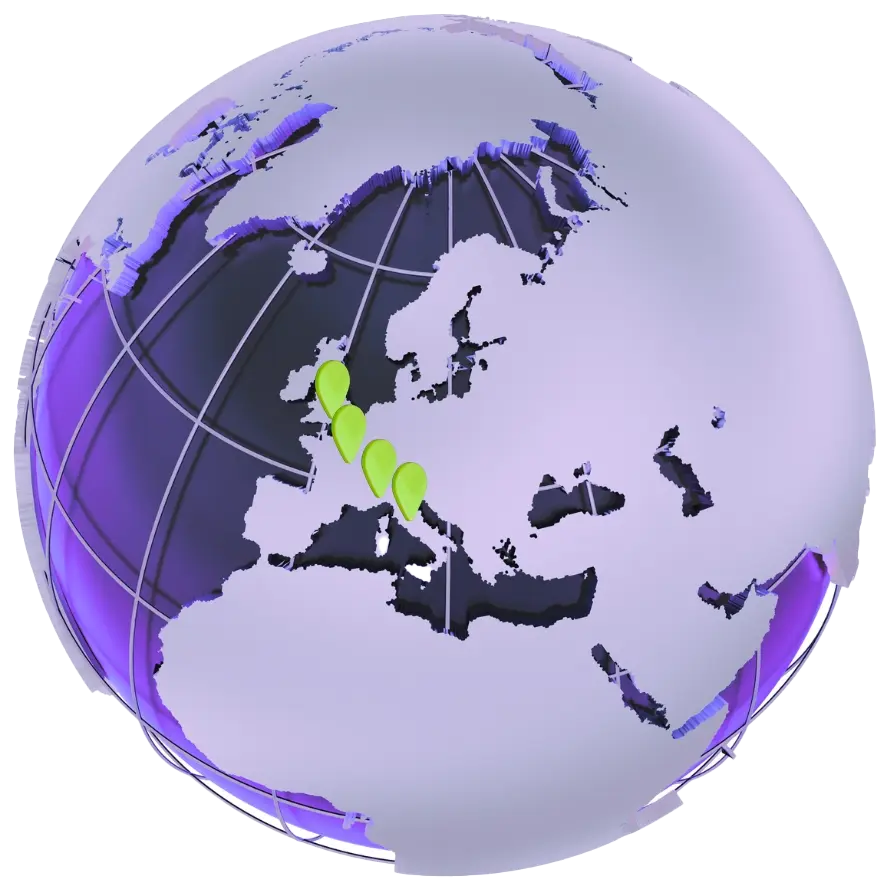Fashion e-commerce: 5 trends to sell fashion online in 2026
The fashion e-commerce industry is among the businesses that continue to grow the most, even now that the pandemic seems to be under control and consumers are happily returning to their old shopping habits.While many sectors have experienced heavy fluctuations, fashion e-commerce’s revenue is steadily growing, despite the many challenges and difficulties that this business model entails.
Why? What is the secret behind an industry that seems unstoppable? And how can it become an opportunity for the fashion e-commerce sector – and not only?
We’d like to find out by analysing the latest market statistics and by highlighting the online shopping trends that will influence the success of online fashion brands in 2026.
The same trends that today, if properly employed, allow some to position themselves at the top of the rankings of the most visited fashion e-commerce websites.
Fashion in numbers: fashion e-commerce statistics

The fashion sector continues to register astonishing numbers, above all online. If during the pandemic customers made a virtue out of necessity, adapting to the online world to satisfy their desire for shopping, as time passed, they actually ended up enjoying it.
First of all, United Kingdom is the fourth largest market for e-commerce in the world with a sensational revenue of US$177.5 billion registered in 2021.
Also, the number of e-commerce users in the UK is expected to grow to 62,1 million by the end of 2026 [source: Statista].
Among the most common shipping providers for e-commerce, according to Statista, we find:
- Royal Mail (36% of online stores)
- DPD (29% of online stores)
- Hermes (22% of online stores).
Fashion and e-commerce: a winning combination
For years people erroneously believed that the frequent problems associated with online purchases would slow down fashion e-commerce. In particular, the fact that these are purchases in which physicality plays a fundamental role - just think of trying on the garment or using your senses such as touch and sight.
Thanks to the technologies and trends that we will examine further on, these obstacles have become surmountable for most consumers, especially because of the following advantages:
- Price: money-saving opportunities offered by online channels are significant.
- Personalised services offered by e-commerce fashion stores: from quick home delivery to free and simplified returns.
In the end, as opportunities and pitfalls proved to be equivalent, preference started to move towards the digital and even inspired a series of trends, including technologically advanced ones, to minimise problems and enhance advantages.
5 trends in online shopping for fashion e-commerce stores

In addition to generic e-commerce trends, valid for any kind of online store, over the years sectorial studies have highlighted a series of key success factors that influence the success of fashion e-commerce stores.
These are mainly:
- AI-driven personalisation algorithms
- Customer experience
- Shipping and delivery
- Choice of channels and markets
- Mobile friendliness
- Sustainable and ethical fashion
The trends of fashion e-commerce in 2026 will refer precisely to these 5 characteristics, trying to enhance the positive aspects offered by the digital world and combine them with a multi-channel experience that evokes the offline one as much as possible.
Let's see some of them together.
1. AI-driven personalisation algorithms
The wide variety of products available online remains a significant advantage over physical stores. However, the challenge for brands in 2026 is managing this abundance without overwhelming customers.
The focus is now on advanced AI-driven personalisation algorithms that predict and adapt to consumer preferences, ensuring that shoppers are presented with items that align with their tastes and past behaviour. This approach improves user experience (UX), making navigation and product discovery on e-commerce platforms more intuitive and customer-centric.
2. From shopping experience to customer experience
As the digital frontier expands, the sensory limitations of online shopping are creatively bridged by cutting-edge technologies. The emphasis in 2026 is not just on replicating, but enhancing the in-store experience through digital means. Advanced augmented reality (AR) solutions now offer virtual fitting rooms where consumers can try on outfits in a 360-degree view from the comfort of their homes, ensuring fit and style before purchase. Real-time AI fashion advisors provide personalised styling tips, pushing the boundary between convenience and bespoke service.
The metaverse has become a new playground for fashion, with brands launching virtual stores that allow consumers to explore and shop in immersive 3D environments. These virtual spaces are also venues for exclusive events and interactions, where brands can launch limited-edition collections as NFTs, creating a sense of exclusivity and modern luxury. This digital transformation extends the shopping experience into a continuous, engaging journey that blends reality with virtual innovation, offering a glimpse into the future of fashion retail.The only limit so far is imagination.
3. Delivery as a critical success factor

In 2026, the delivery process is not just a logistics operation but a core aspect of the customer experience in fashion e-commerce. As consumers demand faster, more flexible delivery options, brands are leveraging advanced predictive logistics to streamline operations and provide precise delivery windows. This technology not only optimises routes for speed but also for environmental impact, supporting the shift towards sustainability.
Brands are now adopting more eco-friendly practices, such as biodegradable packaging and the use of electric or even drone delivery systems, to minimise their carbon footprint. Personalization of delivery continues to evolve, with options for customers to choose packaging based on occasion or gift preferences, enhancing the unboxing experience. These innovations in delivery not only meet customer expectations but also reinforce brand values and commitment to sustainability, setting a new standard for fashion e-commerce in 2026.
By promising free home delivery, any e-commerce encourages impulsive shopping, with a "zero worries" guarantee that is unthinkable when purchasing in a physical clothing store.
Or they can even try cutting-edge digital strategies like Zalando's "try first, pay later" (click here to learn more).
Last-mile delivery also becomes a vehicle to convey the values of fashion e-commerce, namely eco-sustainable packaging, for example, or the choice to rely on low environmental impact vehicles (as ASOS did by choosing to use electric vehicles).
4. International omnichannel in fashion e-commerce
In 2026, the buzzwords 'internationalisation' and 'omnichannel' have evolved into a sophisticated strategy that harnesses the power of big data and AI to create a seamless global shopping experience. Fashion brands are now utilising an API-first approach, integrating real-time data across all platforms to offer a consistent and personalised service to customers worldwide. This integration allows for instant updates in inventory, pricing, and customer preferences across different markets, enhancing operational efficiency and customer satisfaction.
The rise of social commerce continues, with platforms like Instagram and TikTok driving fashion sales through streamlined, platform-native purchasing processes that allow users to buy directly within the apps. Furthermore, the blending of physical and digital realities means that consumers can move effortlessly between online and offline channels, receiving personalised interactions and unified customer service that anticipate their needs and preferences, regardless of location.
This level of integration is proving essential for fashion brands aiming to capture diverse global markets while maintaining a strong local presence.
5. Fashion e-commerce becomes more Mobile
As we step further into 2026, the dominance of mobile in fashion e-commerce solidifies, with technologies that transform smartphones into indispensable shopping companions. Progressive Web Apps (PWAs) have become the standard, delivering a high-quality user experience that mimics native apps but without the need for app store downloads, enabling instant access to e-commerce platforms. These apps are optimized for speed and efficiency, providing a seamless interface that retains users during critical sales journeys.
AI-powered chatbots have evolved into sophisticated virtual shopping assistants, available 24/7 to help consumers with product selections, styling advice, and customer support, making the shopping experience as interactive and personal as visiting a store. Enhanced mobile payment systems offer one-click checkouts, employing advanced security measures to safeguard user data and build trust.
The integration of augmented reality in mobile apps allows customers to see products in their own space or on themselves before making a purchase, merging convenience with confidence. This mobile-centric approach not only caters to the on-the-go lifestyle of modern consumers but also taps into the growing trend of spontaneous purchases, making every smartphone a potential sales terminal.
6. Sustainable and ethical fashion
Consumers are increasingly prioritizing sustainability and ethical practices in their purchasing decisions, which impacts how fashion brands operate online. The trend towards transparency in sourcing and production processes is growing.
Fashion e-commerce platforms are starting to feature filters for sustainable products and dedicated sections for ethically produced goods. Brands are also using blockchain technology to provide verifiable proofs of authenticity and ethical sourcing, appealing to environmentally conscious consumers.
The best clothing e-commerce stores in the world
There are brands that are admirably riding these trends, exploiting them to be successful in the present, but above all to anticipate the future.
And by their results, it shows.
Whether it's marketplaces or monobrand stores, these fashion e-commerce businesses have managed to obtain interesting results in their field and to establish themselves online and offline.
In detail, the best fashion e-commerce marketplaces are:
- Zalando
- Shein
- Vinted
- Yoox
- Bonprix
- Stileo.it
- Escarpe.it
- Asos
While the best fashion monobrand e-commerce stores are:
- Zara
- Adidas
- H&M
- OVS
- Pandora
- Nike
- Intimissimi
What do these names and numbers tell us about the market?
The big winners among monobrand stores
In the ranking, several monobrand stores such as Zara, H&M, OVS follow, which have all done an excellent job in moving from a traditional business, based on brick & mortar activities, to one in which online represents an incredible strength.
Indeed, the great strength of these brands is also that they have been able to value the needs of fast fashion customers, namely speed and the desire of constant change to always remain fashionable. In e-commerce this is conveyed with mixed logistics, which sees online and in-store purchases as two sides of the same coin.
Other interesting cases are those of sports shops, such as Nike and Adidas, or accessories shops, like Pandora and Intimissimi. For these vertical brands, being able to compete both with large marketplaces and with generalist monobrand shops, in terms of traffic volume to the site, is in itself an interesting sign of success.

What about luxury fashion e-commerce?
As you may have noticed, luxury brands are absent from this ranking of the most visited fashion e-commerce stores.
In some ways, victims of their own exclusivity, for which online channels determine a possible loss of control in the direct relationship with the customer and in the shopping experience, luxury fashion in e-commerce remains a little behind.
In the extended ranking we only find Farfetch, the largest luxury marketplace, among the top 15.
Gucci follows in 18th position, then others such as Versace, Louis Vuitton and Prada after the 30th, with still ample room for improvement.
Who knows, perhaps the potential of the metaverse, as already mentioned, will accelerate the process of moving this type of business on the web as well?
Only time will be able to confirm it. Meanwhile, the whole world of fashion continues to grow online, and by paying more attention to the 5 trends for fashion e-commerce examined above, more and more brands will be able to climb to success and discover the benefits of selling on the Internet.
Passionate freelance copywriter, with a niche in ecommerce and logistics. When collaborating with ShippyPro, she loves writing about trends, marketing and communication strategies to help brands gain an edge in an ever-evolving digital landscape.






.webp)



.webp)

